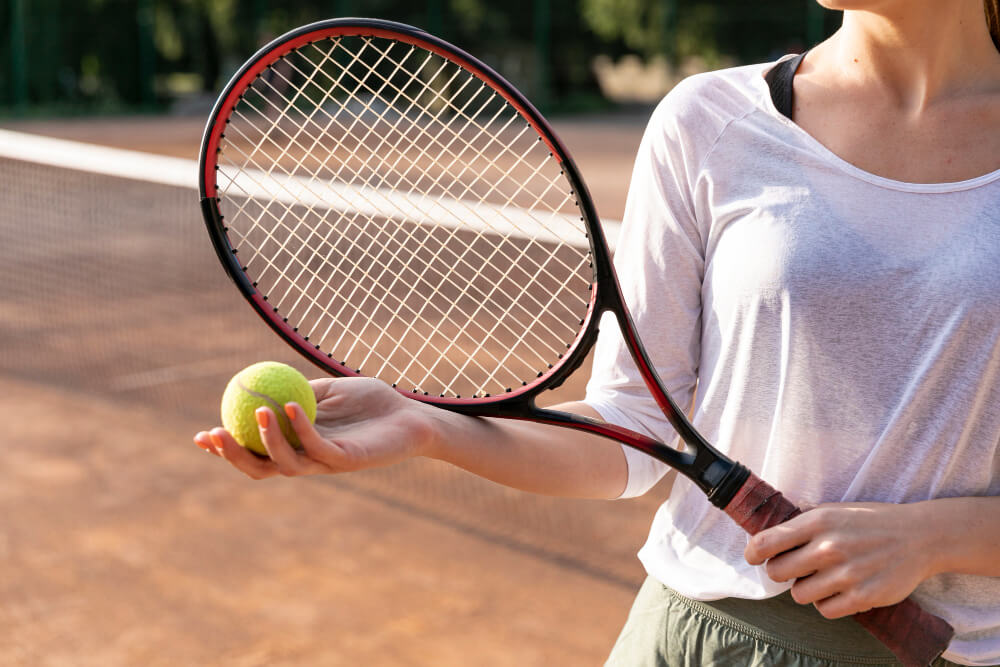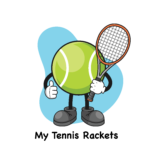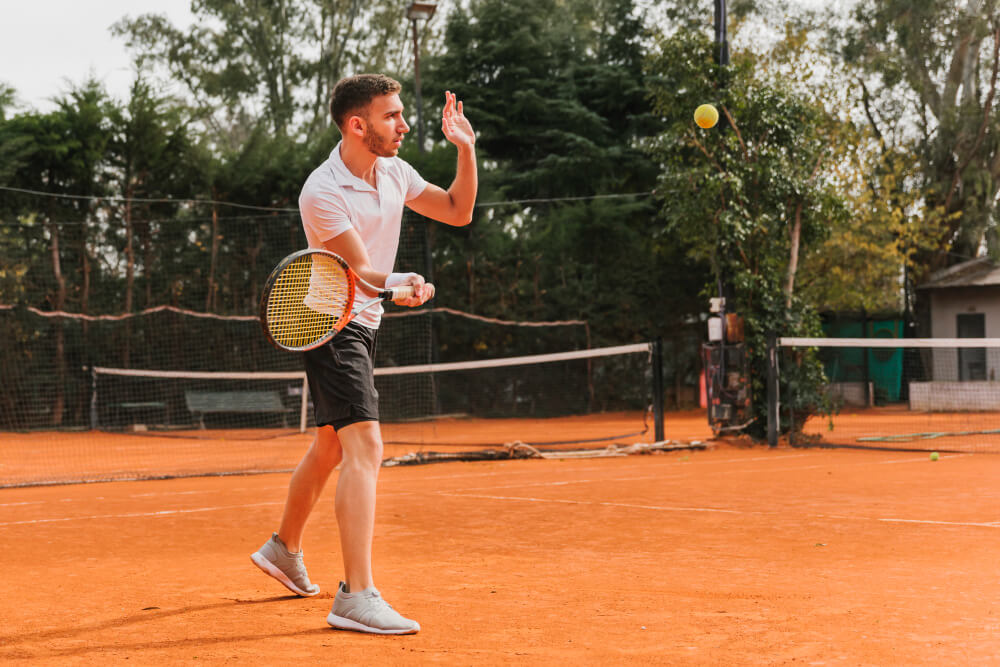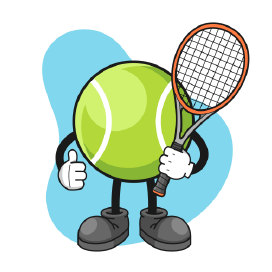Do you know how many tennis rackets professional players use? The answer may surprise you. While most amateurs only have one or two, pros often carry around a dozen or more. This is because they need to have the right racket for every situation. If the courts are dry, they’ll use a different racket than if they’re playing in the rain.
And of course, they need different rackets for different surface types too. So next time you see a professional player with a huge bag of rackets, don’t be fooled – they really do need them all!
How many tennis rackets do professional players use during a match?
Professional tennis players are a great example of how important quality equipment can be. It is not uncommon for professional players to use up to four different rackets during a single match.
This may come as a surprise to many, but using a variety of reliable rackets gives them an edge when they are on the court. Players need to constantly adjust and adapt during long games and having multiple rackets allows them to make those adjustments quickly and efficiently.
In addition, finding the right grip or balance on certain strokes can also be helped by using different racquets with various face thicknesses and frame weights. A good racket is essential for any professional tennis player and it is clear that having multiple options at their disposal makes them all the more prepared for success during a match.
Do they change rackets depending on the surface they’re playing on?
Professional tennis players will often adjust their equipment depending on the surface they’re playing on. Tennis rackets come in different weights, strings, materials, and head sizes and this allows players to change the racket specification to get more spin or power out of their shots depending on whether they’re playing on a grass court, clay court or hard court.
Whether they use a stiffer frame with a thicker gauge string on clay courts or a lighter frame with thinner stringing on faster courts is up to the player and their preferences. A capable player can switch from one type of surface to another without having to significantly change their technique due to the fact that their weapon – in this case the tennis racket – has been adjusted accordingly.

How many tennis rackets do professionals use in a year?
Professional tennis players tend to go through a few tennis rackets each year, depending on the individual and their style of play. Playing in major tournaments for most of the year puts an immense amount of wear and tear on these rackets, requiring them to replace them sometimes several times a season.
Mid-level professionals usually carry an average of six or seven rackets during any given tournament, whereas unusually skilled and powerful players may require upward of ten. The cost associated with replacing all these rackets adds up quickly, but is worth it when considering the career success they may be able to gain using stronger racquets that better suit their playing style.
How many tennis rackets should you have?
The number of tennis rackets you should have ultimately depends on your preferences and dedication to the sport. If you are just beginning to learn how to play, it may be wise to stick with one racket until you have a better understanding of technique and skill development.
Once your skills progress, having two different rackets can be beneficial because each will allow for different options in spin, power, control, and accuracy.
Additionally, if you plan on playing often, it makes sense to invest in at least one new racket every year as the strings tend to lose tension over time. Ultimately, tennis rackets are highly personal items – what works for one might not work for another player so it’s best to research and select models that work best for your exact preferences.
How often do pro tennis players change rackets?
Professional tennis players are constantly thinking about how to gain an edge over the competition, and one of the ways they do this is to frequently switch rackets. It’s not unusual to see a pro player use different rackets during a match; in fact, some players may even change rackets during a single set if they feel their equipment isn’t providing sufficient power or control.
Generally speaking, most professional players change their rackets at least once every few months to ensure they have the most advanced technology and optimal performance. However, depending on the individual player’s preferences and technique, more frequent racket changes may be necessary in order to maintain peak performance.

How often do they restring their rackets, and how much tension do they put on the strings?
Tennis players know that in order to get the most out of their game, they need to restring their rackets regularly. When a racket is not adequately strung, it can affect their performance on the court, so it’s important for them to know when and how often to restring.
Depending on the number of games played, many pro players restring every two or three weeks. They will vary the string tension depending on their style of play and the playing surface – some may opt for higher tension strings if they tend to hit with more power and spin, while lower tension strings might be preferable for those who focus more on control and feel. Either way, putting too much or too little tension on the strings can hinder a player’s performance, so finding just the right amount is key.
What kind of grip do they use, and how often do they replace it?
For pro tennis players, finding the perfect grip size is key to making sure their swing remains comfortable and accurate.
To ensure this, most of them use a standard-sized grip that best fits their hands during play. Since their grip needs to fit well for their pressure points every time they make contact with the racket, they usually have to replace it more often than amateur players as the materials break down over time due to constant use.
How often they need a new one ultimately depends on how frequently they play and the type of surfaces they compete on. All in all, having the right grip is essential for any pro player looking to stay at the top of their game!
What are some of the benefits of using multiple tennis rackets during a match?
Playing tennis with the same racket throughout an entire match can have some disadvantages. One great way to overcome this is by using multiple rackets during a match. By using multiple rackets, a player can enjoy several benefits. They can customize the grip, weight, shock absorption and swing of each racket to their preferred style of play.
The player also has access to different materials and technologies in each racket; this provides them with more options and variety depending on their needs. Additionally, if one racket begins to fail due to wear or tear, the player still has other options available. Using multiple tennis rackets during a match gives the player more options and resources ensuring that they get the most out of their game.
Conclusion
From this post, it’s now clear that tennis rackets are a huge part of the game. Professional players use multiple rackets during the course of a single match and tend to change those rackets often, depending on the surface they’re playing on.
They also restring their rackets regularly to get the maximum benefits from them. Furthermore, it is important for them to select the right grip for their racket and then replace it periodically so that it can provide more control over their shots.
Finally, using multiple tennis rackets can be beneficial in various ways as they can help the player improve their direction of hits and have relaxing moments between points. All these factors considered ensure that using the correct quantity and quality of rackets can stimulate performance with respect to both sensational comfort and technical effectiveness of his/her serves and swings.





